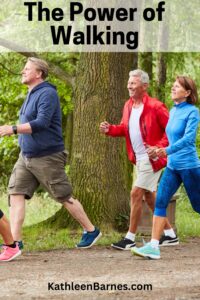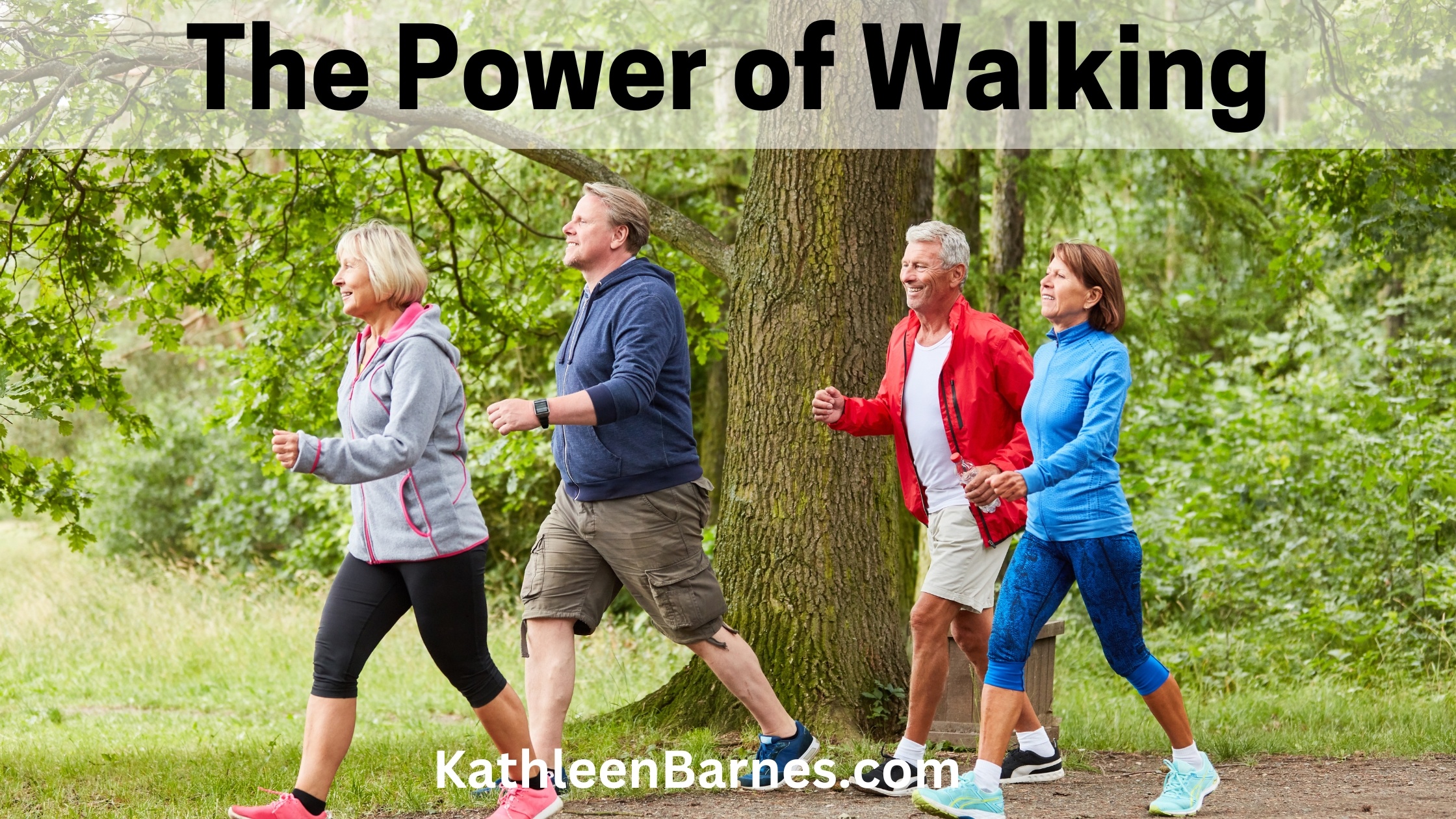As we move into our 40s and beyond, our bodies undergo subtle but important shifts, making it essential to adopt activities that support our changing needs.
activities that support our changing needs.
For women over 40, health goals often include reducing stress, preserving bone health, and maintaining a balanced metabolism.
While there are countless ways to approach fitness, walking stands out as an ideal choice for this age group, thanks to its simplicity and broad health benefits.
Why Walking is Ideal for Women Over 40
Walking is gentle yet effective, providing the kind of low-impact exercise that keeps joints safe and supports overall physical well-being.
For women in their 40s and beyond, activities that support joint health and balance bone density become increasingly vital.
Walking is naturally weight-bearing, meaning it helps strengthen bones and can reduce the risk of osteoporosis without the high-intensity strain that other exercises might impose.
Furthermore, walking plays a unique role in stress management. Life’s demands can often peak during this decade, with careers, family responsibilities, and other obligations competing for time and energy.
A regular walking routine offers a chance to slow down, clear the mind, and reduce cortisol levels, which helps combat stress in a manageable and sustainable way.
Simplicity and Accessibility of Walking
One of the best things about walking is its ease and accessibility. It requires no special equipment, gym memberships, or complex techniques, making it a practical option for women with busy schedules.
A good pair of shoes and a safe path are all that’s needed to get started. Whether done around the neighborhood, in a local park, or even indoors on rainy days, walking can be adapted to suit almost any lifestyle or environment.
Physical Health Benefits and Power of Walking
Walking offers a multitude of physical health benefits that make it an ideal exercise for women over 40, supporting long-term wellness and vitality.
This simple, low-impact activity enhances bone health, cardiovascular fitness, weight management, and joint mobility—all essential components of a healthy lifestyle as we age.
Bone Density Support
For women over 40, bone health is a top priority. As we age, bone density naturally begins to decline, increasing the risk of osteoporosis and fractures.
Walking, as a weight-bearing activity, encourages bones to maintain their strength by placing gentle but consistent pressure on them.
Unlike high-impact exercises, walking builds bone density without causing undue strain on joints or muscles, making it an excellent option for keeping bones strong and resilient.
Cardiovascular Health
One of the most significant benefits of walking is its positive impact on cardiovascular health.
Regular walking helps improve circulation, allowing the heart to pump more efficiently and reducing the risk of heart disease—a concern that becomes more prevalent with age.
Walking also contributes to lowering blood pressure by promoting relaxation and improving blood vessel health.
With each step, you’re boosting heart health, making this simple exercise a powerful ally in reducing heart disease risk and enhancing overall circulation.
Weight Management
For weight management, walking is both effective and sustainable. It offers a gentle way to burn calories without the intense strain that high-impact workouts can cause, especially on the knees and lower back.
Walking can support a healthy weight by gradually increasing caloric expenditure while promoting muscle tone, especially in the legs and core.
Additionally, because it’s low-stress on the body, walking is an exercise that can be done daily, making it easier to stay consistent and avoid the ups and downs often associated with high-impact, intensive workout programs.
Joint Mobility and Reduced Pain
Walking is a low-impact activity that supports joint mobility and helps alleviate stiffness, particularly beneficial for women managing arthritis or joint discomfort.
Regular walking encourages fluid movement and promotes blood flow to the joints, which helps keep them lubricated and flexible.
By incorporating walking into a daily routine, it’s possible to maintain greater mobility, reduce pain, and improve overall joint health without the risk of injury or strain common in high-impact exercises.
Together, these physical health benefits make walking a comprehensive and supportive choice for women over 40, helping to maintain strength, stability, and well-being well into the years ahead.
Mental Health Benefits of Walking
Beyond its physical advantages, walking provides an array of mental health benefits that support emotional well-being and cognitive vitality.
This straightforward activity can significantly reduce stress, enhance mood, boost cognitive function, and connect us with nature in a restorative way—all essential for thriving in midlife and beyond.
Stress Reduction and Mood Boosting
One of the most immediate effects of walking is its ability to relieve stress and elevate mood.
Walking, especially at a comfortable pace, lowers cortisol, the body’s primary stress hormone. High cortisol levels, often linked to chronic stress, can lead to fatigue, anxiety, and other health challenges over time.
Walking not only decreases cortisol but also promotes the release of endorphins, the body’s natural “feel-good” chemicals. This endorphin boost can help alleviate feelings of tension or anxiety, creating a sense of well-being and positivity after even a short walk.
Enhanced Focus and Cognitive Function
As we age, supporting brain health becomes increasingly important, and walking plays a helpful role in maintaining cognitive function.
Regular walking has been shown to improve mental clarity, helping us think more clearly and stay focused. It also supports memory by promoting blood flow to the brain, which can reduce age-related memory decline and enhance overall cognitive function.
Walking is especially effective when done consistently, making it a powerful, natural tool for sustaining brain health and sharpness over time.
Connection with Nature
When we walk outdoors, we gain the additional benefits that nature offers. Exposure to green spaces and fresh air can reduce symptoms of anxiety, foster a sense of calm, and improve overall relaxation.
Being in nature has been shown to lower stress levels more effectively than indoor exercise, promoting a deep sense of mental and emotional renewal. Walking outdoors invites us to disconnect from screens and reconnect with the world around us, creating a break from daily stressors and a chance to simply breathe, observe, and recharge.
In essence, walking is more than just physical exercise; it’s a mental health practice. Whether indoors or outdoors, a regular walking routine can reduce stress, support a positive mood, and enhance cognitive resilience, making it an invaluable component of a balanced, healthy life for women over 40.
Tips to Make Walking Enjoyable and Effective
Walking can be more than just a routine exercise—it can also be an enjoyable and engaging part of your day. By incorporating variety, mindfulness, and even social connections, walking can become a versatile and rewarding habit.
Here are some tips to help you get the most out of your walks while keeping things fun and effective.
Incorporate Variety
One of the best ways to keep walking enjoyable is to change up your routes, pace, and terrain. Try exploring different paths in your neighborhood, local parks, or hiking trails to add a sense of adventure.
Varying your pace, like alternating between brisk and moderate speeds, can make your walks feel more dynamic and provide a greater cardiovascular challenge.
You might even consider walking on different surfaces—such as grassy fields, gravel trails, or sandy beaches—to engage different muscle groups and add a bit of excitement to your routine.
Mindfulness Walking
Turning your walk into a mindful experience can deepen the mental and emotional benefits. As you walk, focus on your breath, taking slow, deep breaths to help relax your mind and body.
Pay attention to your surroundings—notice the colors, sounds, and scents around you. Practicing gratitude, by acknowledging positive thoughts or appreciating nature’s beauty, can make your walk meditative and help you feel grounded and present in the moment.
Mindful walking can transform a simple stroll into a refreshing mental retreat.
Tracking Progress
Using a step counter or fitness app to track your progress can add motivation and structure to your walking routine.
Set realistic goals, whether it’s a daily step target or a specific distance, and celebrate your achievements as you go.
Progress tracking allows you to see how far you’ve come and helps build consistency, making it more likely you’ll stick with your walking habit. Many apps also offer social features, where you can share milestones and motivate others.
Add Some Strength Work
For a more comprehensive workout, consider incorporating intervals of light strength exercises during your walk. Simple moves like lunges, squats, or arm lifts can strengthen muscles and increase overall fitness.
For example, you might pause every few minutes to do a set of lunges or use a park bench for step-ups. These small additions add variety and help improve balance, stability, and muscle tone, giving your walk a functional fitness boost.
Social Walks
Walking with friends, family, or a local walking group is a great way to make exercise feel social and enjoyable. Walking with others not only makes the time go by faster but also provides motivation and accountability, helping you stay consistent with your routine.
It’s a wonderful way to connect with people, share stories, and stay active together. If you don’t have a walking buddy, look for community walking groups or fitness classes that incorporate walking into their activities.
Whether it’s through variety, mindfulness, tracking, strength-building, or social connections, there are countless ways to make walking both effective and delightful.
Practical Tips for Starting and Sticking with a Walking Routine
Starting a new walking routine can be incredibly rewarding, but like any habit, it’s essential to set yourself up for long-term success.
By focusing on manageable goals, choosing the right footwear, and incorporating stretching, you’ll build a sustainable and enjoyable walking practice that’s easy to stick with.
Choose the Right Footwear
The right shoes can make all the difference when it comes to enjoying and sticking with a walking routine. Look for comfortable, supportive walking shoes that provide cushioning and stability to protect your feet, knees, and joints.
Shoes with good arch support and shock absorption help prevent injuries and reduce discomfort, especially during longer walks. Remember to replace your walking shoes every 300-500 miles to ensure they continue to provide proper support.
Stretching Before and After
Incorporating some basic stretches before and after your walk can enhance flexibility and reduce injury risk.
Before starting, focus on gentle, dynamic stretches, like leg swings or arm circles, to loosen up your muscles.
After your walk, spend a few minutes on static stretches, such as calf, hamstring, and quadriceps stretches, to maintain flexibility and help your muscles cool down.
Stretching regularly not only improves mobility but also helps prevent muscle tightness and soreness, making each walk more enjoyable.
Final Thoughts
The beauty of walking lies in its simplicity and accessibility, making it a powerful tool for long-term health and well-being.
Walking is one of those rare activities that balances physical fitness with mental clarity, making it a lifelong ally for health, particularly for women over 40.
If you’re considering starting a walking routine, remember that every journey begins with a single step. You don’t need to start with long distances or intense paces; even a few minutes a day is a step toward a healthier lifestyle.
The key is consistency, building up gradually as it becomes part of your routine. So lace up a comfortable pair of shoes, take a deep breath, and let today be the start of a walking journey that supports your health and happiness for years to come.
Other articles on walking:







